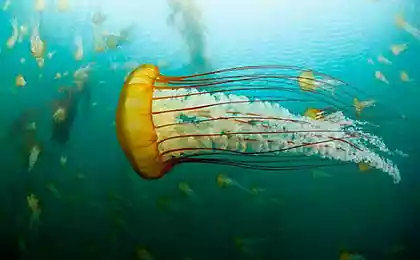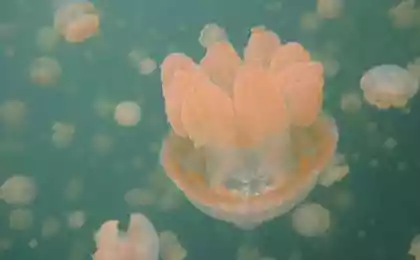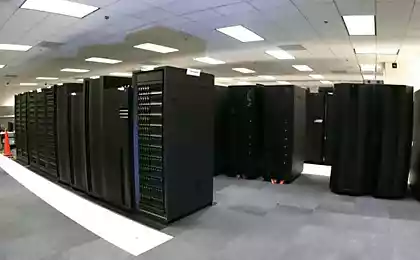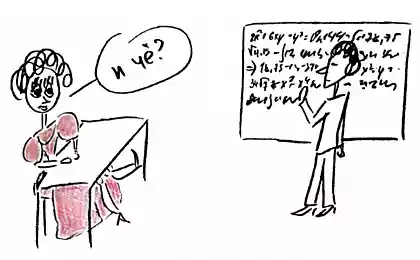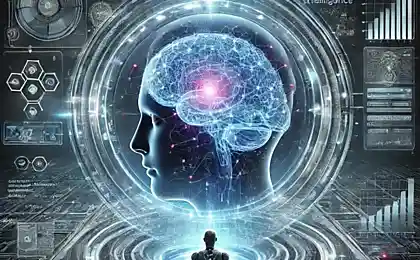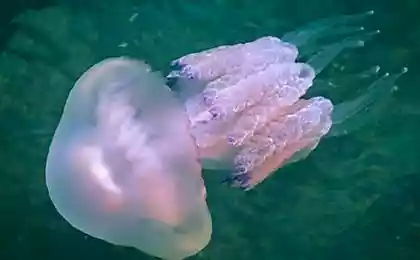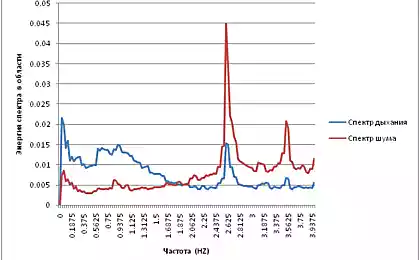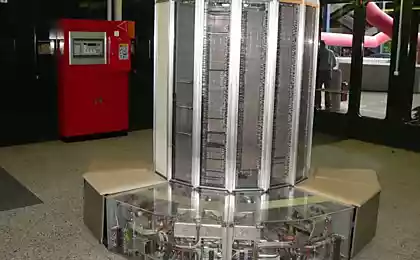184
Hunter jellyfish as supercomputers?
Jellyfish of the order Cornerota are common in the northeastern Atlantic, as well as in the Adriatic, Mediterranean and Black Seas. In particular, the species Rhizostoma pulmo, reaching 40 centimeters in diameter, is the largest among their representatives living off the coast of the British Isles. It is here that biologist Andrew Reynolds discovered in jellyfish a unique strategy for obtaining food for animals.
If we talk about jellyfish-cornerotes in general, then their diet is quite diverse. Some species are capable of external digestion, so their menu includes quite large underwater inhabitants, for example, fish. Others literally turn into “vegetables”: settling on the bottom, they practice photosynthesis due to the symbiotic microorganisms of zooxanthellae. However, unlike its brethren, Rhizostoma pulmo is more selective and feeds exclusively on plankton. Therefore, he managed to master several methods of hunting at once - and among them a couple stands out, which can be described using the methods of mathematical statistics.
The first one is called Levi Walks. The author explains the essence of this strategy on a simple example with lost keys. Having searched for them in one’s pocket and not having achieved success, the person transfers his search to another place, for example, on a table where he also intensively searches, and so on until the goal is achieved. Such tactics are quite justified from the point of view of efficiency.
In the same way, the jellyfish perform random movements, during which more frequent short steps are interspersed with long ones. That is, first, the jellyfish looks for prey near its location, and then moves to a considerable distance and continues “detailed” searches there. This strategy is common among many animals – for example, sharks, turtles, arthropods or bees.
However, the most productive for jellyfish was the second strategy, which resembles the Simulated annealing algorithm. The latter is based on imitation of the physical process that occurs during the crystallization of a substance, including the annealing (hardening) of metals to increase homogeneity, eliminate defects, less susceptibility to wear and greater strength.
Every metal has a crystal lattice. It describes possible variants of the geometrical position of the atoms of matter, and each of these states corresponds to a certain level of energy. During annealing, the metal is heated to a certain temperature, which causes the atoms of the crystal lattice to leave their positions. Then a slow and controlled cooling begins, as a result of which the atoms “choose” the most suitable place for themselves. Thus, the goal of the idea is to bring the system to the most ordered state with less energy than the original.
For any mathematician, this algorithm is associated with supercomputers and is characterized by the fact that it can be used to find the optimal solution to a complex problem in a very short time, says Andrew Reynolds in his article published in the Journal of the Royal Society Interface of the Royal Society of Natural Knowledge of London. But the simplest example is our usual stay on the Internet. We open Google, we make a request, we get information. To enter the next query, we have to go back to the first page of the search, and so on.
In jellyfish, the strategy of simulated annealing is expressed as follows: the predator makes a jump at an arbitrary distance - and, if there is no suitable prey, returns to the starting point, from where it makes a jump in the other direction. The point of such actions is to find the maximum concentration of prey in the water column or choose the strongest of the many olfactory trails emanating from distant prey.
Combining the two strategies is the key to successful survival for an active plankton user like Rhizostoma pulmo. This so far unprecedented example of a living organism’s “computer” behavior clearly suggests that nature already knows all of our future advances in mathematics – one can only guess what it will surprise us next.
Source: facepla.net
Proper arrangement and location of Windows
Transfer to electric cars interfere with psychological reasons
